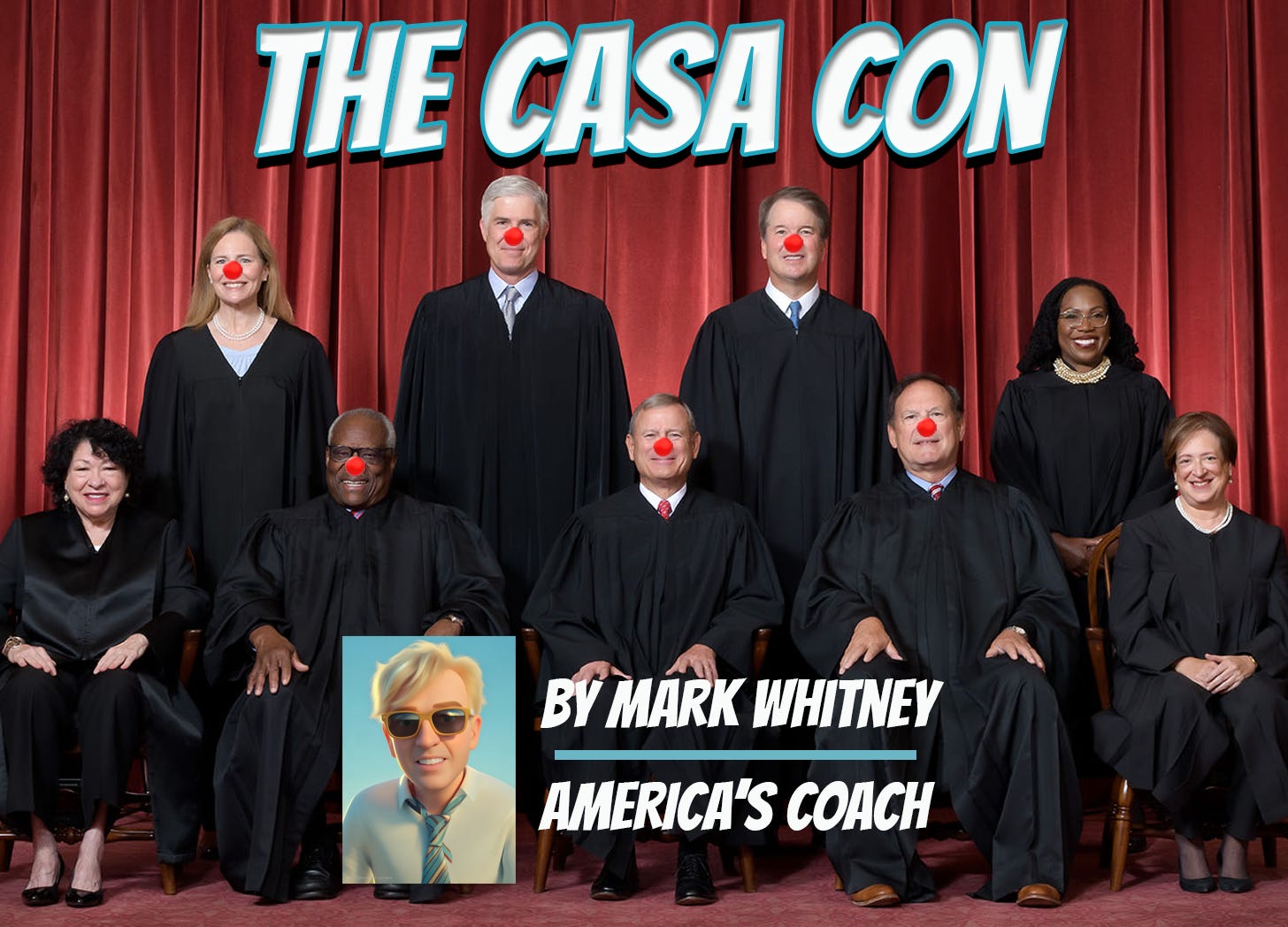THE CASA CON: Executive Overreach, Judicial Bypass, and the Strategic Erosion of Standing
For 28 more days, every person born in the United States is a citizen of the United States. Beginning July 28th that is no longer true.
Introduction
In Department of Homeland Security, et al. v. CASA de Maryland, et al.,1 the Supreme Court declined to address the constitutional merits of a Trump-issued executive order targeting birthright citizenship. Instead, the Court used the case to tighten the doctrine of organizational standing and implicitly undermine the availability and viability of nationwide injunctions. Though the litigation nominally involved a challenge to a facially unconstitutional definition of immigration policy, the case ultimately functioned as a sophisticated legal stratagem—one designed to provoke judicial review, only to then delegitimize the process by which relief was obtained.
This piece contends that CASA was and is a bait-and-switch operation at the highest level of constitutional gamesmanship: the executive branch knowingly issued a legally indefensible executive order to invite litigation and secure injunctions, then appealed not to vindicate the policy but to attack the standing of the litigants and the procedural remedies used to enjoin enforcement. The Court’s willingness to entertain this procedural sleight of hand suggests a tacit approval of executive overreach so long as it is pursued with procedural cunning.
The only alternative interpretation is that the four justices who voted to hear this case are idiots, which they clearly are not.
I. The Procedural Posture and Tactical Loss
The executive order at issue sought to limit the application of the Citizenship Clause of the Fourteenth Amendment to children born in the United States to noncitizen parents—an interpretation directly at odds with United States v. Wong Kim Ark,2 and a century of settled precedent. Predictably, immigrant rights organizations filed suit and won preliminary injunctions at both the district and circuit levels.3
Instead of defending the order's constitutionality, the government pivoted: it challenged whether the plaintiffs—advocacy organizations—had Article III standing to seek relief. The Supreme Court granted certiorari and reversed on that ground, holding that the plaintiffs failed to allege a sufficiently concrete and particularized injury.4 In doing so, the Court never ruled on the validity of the executive order itself because the question of validity was not pressed by the government.
II. Bait, Switch, and Game Theory
The CASA litigation can be viewed through the lens of game theory. The executive branch constructed a no-lose scenario:
Bait: Issue an Executive Order that is guaranteed to draw swift legal challenge and defeat on the merits.
Switch: Appeal the loss not on substance but on procedural grounds only, focusing on standing and scope of injunction.
Win: Secure a Supreme Court ruling narrowing organizational standing and eliminate federal judges’ power to expeditiously enjoin federal violations nationally, pending judicial review.
The "loss" at the lower courts becomes a strategic trade-off for a doctrinal win at the Supreme Court. This is not accidental. As scholars have noted, “[e]xecutive officials can use litigation as a tool for entrenching ideological goals,”5 particularly when the judiciary is willing to limit its inquiry to threshold questions.
III. The Weaponization of Procedure
The Court’s ruling in CASA creates a troubling asymmetry: the executive branch may issue patently unconstitutional policies, but challenges to those policies are procedurally forbidden unless brought by a narrowly defined class of injured parties. In the meantime, the unconstitutional policy take effects, causing systemic irreparable harm, while remaining insulated from judicial review.
This framework effectively undermines the availability of preliminary relief—especially nationwide injunctions—by delegitimizing the standing of the organizations most likely to seek it. As Professor Mila Sohoni has argued, procedural rulings that limit judicial remedies have the effect of “nullifying rights without ever acknowledging it.”6
IV. Rights Without Remedies
The doctrinal implication of CASA is this: constitutional rights exist as a legal matter, but as a practical matter they not enforceable in ways that present an existential threat to the unconstitutional pen of an overreaching chief executive. The executive’s ability to preempt review—by acting quickly, avoiding enforcement triggers, or strategically crafting jurisdictional defenses—means that current and future unconstitutional policies may never face meaningful judicial scrutiny.
The Supreme Court has long held, “[r]ights, by their nature, imply remedies.”7 The CASA majority thumbs its nose at this bedrock maxim, charting a path toward constitutional abstraction: rights without standing, injuries without redress, and orders that evade judicial review until long after their effects are felt, if at all.
Conclusion
CASA v. Trump marks a moment of jurisprudential inversion. It was ostensibly a case about birthright citizenship. It became a vehicle for executive power consolidation and judicial disengagement. By inviting a challenge it intended to lose, and then redirecting the litigation toward procedural concerns, the executive branch exploited the structure of Article III to erode the protective function of the courts.
The Supreme Court, by acquiescing to this strategy, has effectively rewritten the rules of engagement between the citizenry and the state. The right to sue the government has always been a cornerstone of constitutional accountability. CASA transforms that right into a labyrinth of hurdles—legal, procedural, and strategic—accessible only to the very few who are equipped to survive its narrowing gates.
Footnotes
Dep’t of Homeland Sec. v. CASA de Maryland, 603 U.S. __ (2025).
United States v. Wong Kim Ark, 169 U.S. 649 (1898).
CASA de Maryland v. Trump, 486 F. Supp. 3d 928 (D. Md. 2020); CASA de Maryland v. Trump, 971 F.3d 220 (4th Cir. 2021).
CASA, 603 U.S. at __.
Aziz Z. Huq, Judicial Independence and the Rationing of Constitutional Remedies, 65 Duke L.J. 1, 56–58 (2015).
Mila Sohoni, The Lost History of the “Universal” Injunction, 133 Harv. L. Rev. 920, 990–91 (2020).
Marbury v. Madison, 5 U.S. (1 Cranch) 137, 163 (1803).



